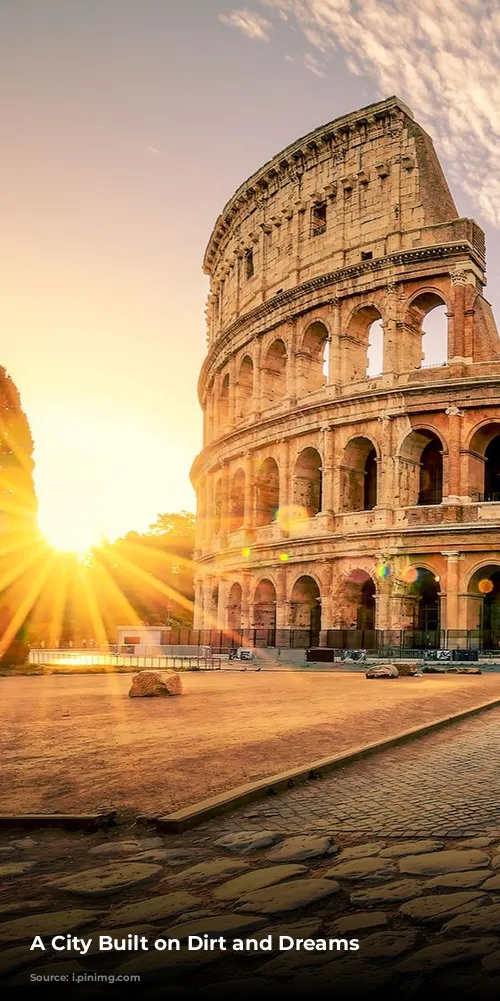Rome: A city that evokes images of towering spires reaching for the heavens. But beneath this facade of grandeur, lies a different truth. Anthony Burgess, a renowned writer who lived in Rome in the 1970s, eloquently captures this duality.
“At roof-top level, Rome may seem a city of spires and steeples and towers that reach up towards eternal truths,” he wrote, “But this city is not built in the sky. It is built on dirt, earth, dung, copulation, death, humanity.”
Burgess highlights the stark contrast between the city’s majestic exterior and the raw, earthly reality that shapes its core. The city’s true essence, he suggests, is found not in its grand monuments, but in its bustling streets, its hidden alleys, and the lives of its people. Rome, in its essence, is a vibrant, living city, built on the foundations of human experience – both the beautiful and the brutal.
A City of Grit and Satire
The Romans themselves were acutely aware of this duality, celebrating the earthy, satirical side of their culture. Satire, a literary genre that mocks social follies and hypocrisy, was embraced by the Romans as a powerful tool for social commentary.
“The Romans … proudly declared that satire was ‘totally ours,’ ” writes Robert Cowan, a classics scholar. “Instead of heroes, noble deeds, and city-foundations recounted in elevated language,” ancient Romans crafted their literature from “a hodgepodge of scumbags, orgies, and the breakdown of urban society, spat out in words as filthy as the vices they describe.”
The Roman satirists, like Lucilius, the first known satirist, were not afraid to expose the darker side of their society. They reveled in the absurdity of power, the hypocrisy of morals, and the messy reality of everyday life. This embrace of satire, Cowan suggests, is what gave Roman literature its unique flavor – a potent blend of humor, cynicism, and truth.
A City of Contrasts
The contrasting aspects of Rome are vividly illustrated in the History in 3D project, which offers an immersive virtual tour of ancient Rome. This ambitious endeavor, now nearing completion, aims to recreate the city’s grandeur with stunning accuracy.
“The most extensive, detailed and accurate virtual 3D reconstruction of Ancient Rome,” its creators, write. They are about halfway through the project, which currently includes such areas as the Forum, the Colosseum, Imperial Forums, “famous baths, theaters, temples and palaces” and the Trastevere, where Burgess made his home millennia after the period represented in the CGI reconstruction above and where, he wrote in the 1970s, antiquity had been preserved.
The Trastevere, a neighborhood steeped in history, provides a window into the city’s enduring spirit. Burgess observes the Trasteverini, the locals who consider themselves the true inheritors of Roman culture, as a microcosm of the city’s enduring spirit. They embody the same earthy, rebellious energy that characterized the ancient Romans, their language rough and their spirit unyielding.
An Enduring City
The Romans, despite their triumphs and failures, left behind a legacy that resonates to this day. Their language, as raw and powerful as their city itself, offers a glimpse into the heart of ancient Rome.
“The language of this Rome, like that of Juvenal, the ancient city’s greatest satirist, offers “a ground-level view of a Rome we could barely guess at from the heroism of the Aeneid,” writes Cowan. “The language of the Trasteverini is rough,” writes Burgess, “scurrilous, blasphemous, obscene, the tongue of the gutter. Many of them are leaders of intensity, rebels against the government. They have had two thousand years of bad government and they must look forward to two thousand more.”
As we soar over the city’s rooftops in this impressive virtual reconstruction, we can almost hear the echoes of their voices – the laughter, the anger, the defiance. We can imagine the streets teeming with life, a tapestry of humanity woven together by its shared experiences. While the physical city may have evolved over time, the essence of Rome – its spirit of rebellion, its love of life, and its enduring resilience – remains as vibrant as ever.
